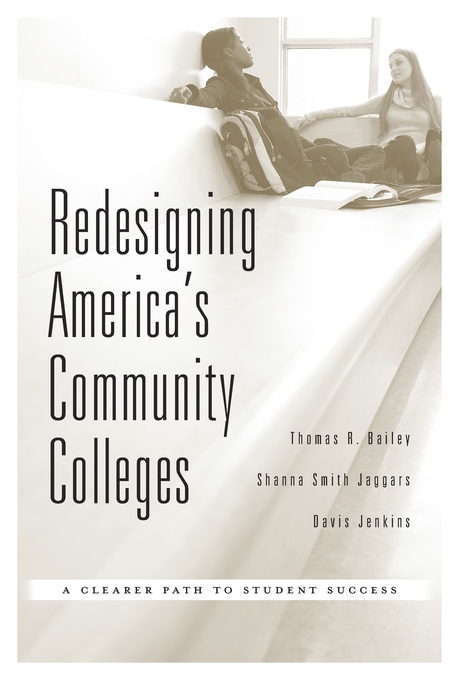At least rhetorically––not so much when it comes to funding––there is a lot of support on a bi-partisan basis for community colleges. They are seen as critical to ![]() preparing workers for the skilled trades and other mid-skill jobs. Occupations employers claim where there is more demand than supply.
preparing workers for the skilled trades and other mid-skill jobs. Occupations employers claim where there is more demand than supply.
To be effective institutions of better matching supply and demand in good-paying jobs that do not require four-year degrees community colleges, in Michigan and across the nation, face two prime challenges. They are underfunded. And they have too low completion rates.
We have used this post frequently to make the case that increased public investments in education from birth through college is an economic growth priority. What I want to focus on in this post is the latter: the need to improve the proportion of community college students who earn a credential of value.
The must-read book on the topic is Redesigning America’s Community Colleges co-authored by Thomas Bailey, Shana Smith Jaggars and Davis Jenkins all of the Community College Research Center at Teachers College, Columbia University. The authors define the challenge this way:
Community colleges in the United States provide access to higher education for over 10 million students each year, representing nearly half of the nation’s undergraduates. These open door institutions––which are expected to serve nearly anyone who wants to attend college––are a manifestation of our society’s commitment to educational opportunity, and they reflect a common understanding of postsecondary education as the foundation of economic growth and upward mobility. … Yet most students who enter these colleges never finish: fewer than four of every ten complete any type of degree or certificate within six years.
(The four includes those who earn a degree or certificate from an institution of higher education other than a community college. Primarily those who earn four-year degrees after transferring to a university.)
The book describes the features of a playbook to improve completion rates and labor market outcomes. First and foremost is the insight that the fundamental task is the redesign of community colleges and its programming, not improving execution of the current design. That community colleges were designed to “expand college enrollments, particularly among underrepresented students, and at a low cost. … However, colleges designed to maximize course enrollment are not well designed to maximize completion of high-quality programs.”
The book lays out four fundamental areas where redesign is required to improve completion rates and labor market outcomes:
- Redesign from a cafeteria-style self-service model to a guided pathways model. Moving from students largely on their own in choosing from a multitude of courses and credentials to limiting student choice to “educationally coherent pathways, each with clearly defined learning outcomes that build across the curriculum and are aligned with requirements for education and career advancement in the given field.”
- Guiding students. What the book calls intake and student supports. This involves moving to intensive and mandatory student counseling. Everything from helping students pick a pathway or a program that leads to a good-paying job and career; to staying on top of student progress and intervening when a student is experiencing difficulties in staying on track no matter if the reason is academic or otherwise; and to providing high-quality job placement services for those who earn credentials.
- Moving student instruction from lecture/imparting content to a “learning facilitation approach to instruction, which focuses on building students’ academic motivation and metacognition”.
- Dealing with unprepared students through a complete redesign of developmental education.
Beyond redesign in these four areas the authors identify several other important lessons:
Institutional leadership matters enormously. Redesign of existing institutions and programs is difficult to accomplish. It, almost certainly, won’t happen if those at the top don’t make improving credential completion and labor market outcomes the institution’s top priority.
Program outcome data is essential to create a culture of evidence. Data collection and analysis is a clear area for reform for all schools: setting up the needed infrastructure to be able to regularly reflect on credential attainment and the labor market outcomes of students.
Switching to online learning is, almost certainly, not effective in improving either credential completion or labor market outcomes. As the book states: “To provide students with more flexible learning options, community colleges are increasingly turning to fully online instruction, which tends to reinforce the cafeteria model of disconnection and isolation, while undermining many students’ academic success.”
Not all community college credentials lead to better labor market outcomes. What matters to most students is doing better––both in the next job and over a long career––in the labor market, not earning a credential. If you earn a credential and still are stuck in low-wage work you are worse off than those who take community college courses, don’t earn a credential, but obtain better-paying work.
The good news is many of Michigan community colleges are engaged through the Michigan Center for Student Success at the Michigan Community Colleges Associated in moving to guided pathways. You can find more about the initiative and the colleges’ progress here.
In our state education policy report, A Path to Good-paying Careers for all Michiganders: Improving student outcomes from education, birth to college, we note that “One can make a strong case that we have a human development system that tolerates high levels of student failure”. It is far past time that we simply accept as OK that fewer than four of every ten who enroll in community college complete any type of degree or certificate within six years.







